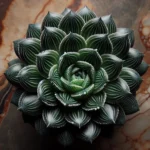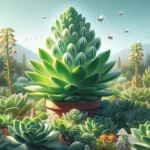Introduction to Haworthia Tessellata
Welcome to the captivating world of Haworthia tessellata, a striking succulent that has been stealing the hearts of plant lovers across the globe. Imagine a plant that not only thrives with minimal fuss but also brings a touch of geometric aesthetics to your indoor garden. That’s the magic of Haworthia tessellata! Hailing from the arid landscapes of Southern Africa, this diminutive beauty is celebrated for its unique, mosaic-like leaf patterning, which has rightfully earned it a spot in the succulent limelight.
It’s not just the tessellated allure that makes this succulent a popular choice among enthusiasts. In their natural habitat, these plants have adapted to thrive under the harsh rays of the African sun, making them remarkably resilient and low-maintenance. Their compact size and forgiving nature make them a perfect fit for cozy city apartments or to liven up small office spaces. And the best part? They’re like living pieces of art that constantly evolve, with each leaf unfolding a story of survival and beauty.
The allure of Haworthia tessellata isn’t confined to its visual charm. For those who dive into the world of succulents, they often find these little plants to be gateways to a larger universe of eco-friendly and sustainable gardening. Keen on understanding more about how to take care of your own Haworthia tessellata? Why not uncover the nuances of succulent care and ensure your green companion flourishes?
While some may marvel at the tessellated patterns of the Haworthia, there’s a whole realm of succulent varieties to explore, each with their unique charm and care requirements. In the verdant universe of succulents, the Haworthia tessellata stands as a testament to the diversity and adaptability of these fascinating plants.
Speaking of adaptability, few things represent it better than the Haworthia tessellata’s skillful means of conserving water. Its plump, tessellated leaves are not just a visual treat but are filled with juicy water reserves, allowing the plant to withstand periods of drought. It’s this remarkable feature that invites a comparison to the camel of the plant world—a survivalist whose evolved to store life-giving moisture against lean times.
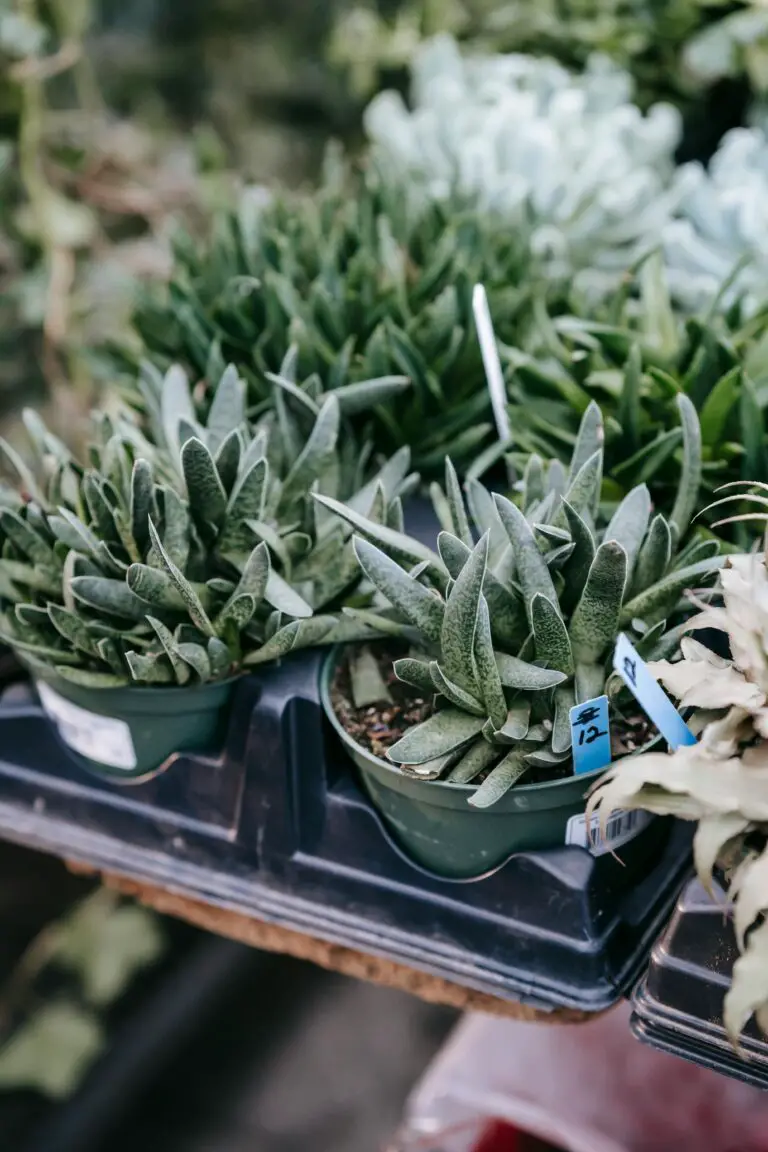
Envision walking through a local street market, where potted Haworthia tessellata are displayed alongside their succulent cousins. Their stark, patterned beauty catches your eye, compelling an impromptu collection. At home, they become a focal point, sparking conversations and igniting a passion for greenery in friends and family alike.
The Haworthia tessellata’s undeniable charm lies in its ability to connect people with nature, even in the most urban of environments. It’s a reminder that beauty and resilience often come in small, spiky packages, inspiring a whole community of succulent aficionados who cherish these rugged yet delicate marvels. As we untangle the secrets of this succulent gem, its tale is one that intertwines the wilds of Africa with the heart of our homes, bringing a piece of the great outdoors into our personal spaces.
Understanding the Haworthia Tessellata’s Unique Appearance
Have you ever caught a glimpse of something so intriguing that you just had to stop and take a closer look? That’s the power of the Haworthia Tessellata, a succulent that captures the essence of nature’s artistry. Let’s peel back the layers of this alluring specimen, revealing what makes it a standout in the succulent world.
The Haworthia Tessellata, often lauded for its distinct tessellated leaf pattern, is akin to a natural mosaic. Each leaf is a puzzle piece, characterized by a network of white lines that seem to map out the paths of an unseen labyrinth. This geometric masterpiece doesn’t just happen by chance; it’s the result of the plant’s adaptation to its arid homeland in Southern Africa. These markings are not just decorative; they help to deflect some of the scorching sun, much like how the white lines in a parking lot reflect light, keeping the surface cooler than the black asphalt.
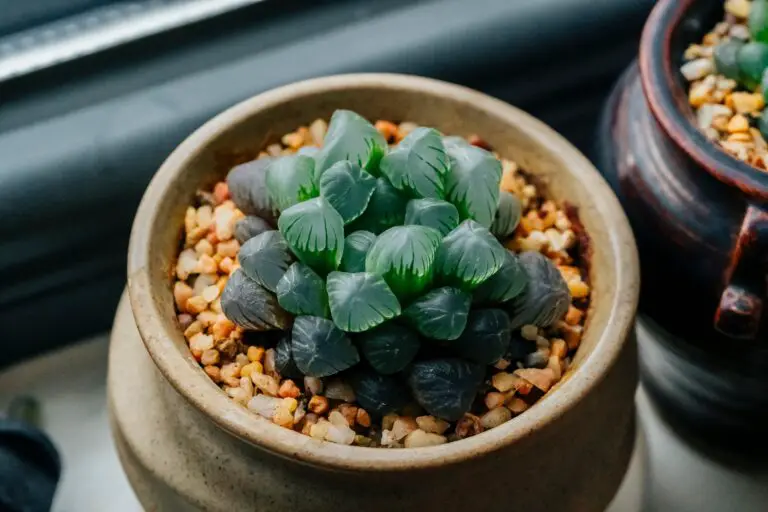
Run your fingers along its leaves, and you’ll feel the subtle bumps and grooves that make the Haworthia Tessellata a delight to touch. It’s like braille that whispers secrets of survival, each bump a testament to its resilience. The succulent’s fleshy, beautifully armored leaves can store ample water, preparing the plant for times of drought—think of them as nature’s water bottles, ingeniously designed to keep the plant hydrated.
While this succulent may prefer the sun’s kiss, it thrives admirably indoors. In fact, when it comes to succulent care, the Haworthia Tessellata isn’t fussy; it’s happy to bask in indirect light, making it a perfect green companion for those bright spots in your home. If you’re aiming to create a thriving succulent haven, this easy-going plant could be your first building block.
Witnessing the Haworthia Tessellata in full glory is a gentle reminder of the wonders of adaptation and the sheer diversity found in the plant kingdom. Like nature’s own version of four-cornered origami, this succulent’s appearance is a blend of precision and whimsy, a true celebration of life’s capacity to surprise and delight. So next time you come across a Haworthia Tessellata, take a moment to appreciate the intricate beauty it quietly showcases, no fanfare needed—just pure, understated elegance.
Optimal Growing Conditions for Haworthia Tessellata
Welcome, succulent enthusiasts! If you’re delving into the world of these resilient and fascinating plants, Haworthia tessellata might just catch your eye. Known for its striking, mosaicked leaves that resemble a rich tapestry woven by Mother Nature, this succulent is a must-have. But to truly let this living work of art shine, it’s crucial to understand its preferred growing conditions. Let’s turn the spotlight on creating the perfect environment for your Haworthia tessellata to thrive.
Sunlight: A Delicate Dance
Picture this: the gentle morning sun kissing the tips of your Haworthia tessellata, just enough to brighten its day without causing a sunburn. Yes, even plants can get sunburnt! This succulent enjoys a soft touch of sunlight, preferring bright but indirect rays. Shield it from the harsh midday sun by placing it near a window with sheer curtains or on a shaded patio. This careful balance will keep its patterns vivid and prevent the fading of its lush, deep green color.

Temperature: Comfort is Key
Think of your Haworthia tessellata as a guest at a garden party—comfort is key! It thrives in temperatures ranging from 68°F to 80°F (20°C to 27°C). Extreme heat or cold can send it into a state of shock. We’re looking to avoid the drama of frozen or scorched leaves. Keep it cozy by moving it indoors during frosty winters or providing some shade during a heatwave. Remember, a comfortable Haworthia is a happy Haworthia.
Microclimate Preferences: Little Luxuries
The devil is in the details, and Haworthia tessellata’s preference for microclimates is no different. This gem prospers in a setting that emulates its natural habitat—a semi-arid region with good airflow and slight humidity. It’s all about creating that breezy, effortlessly airy vibe. A tip from the pros: Place your plant in a spot with a flow of fresh air, but avoid drafty windows that could bring sudden temperature swings. With these little luxuries, your Haworthia tessellata will boast robust health and unmissable allure.
By mirroring the optimal growing conditions your Haworthia tessellata desires, you set the stage for a flourishing spectacle that commands attention. Treat it well, and you’ll bask in the beauty of this succulent gem for years to come. Let’s nurture our green friends with the same patience and care they’ve been serenely exuding all along.
Watering and Feeding Your Haworthia Tessellata
The art of keeping a Haworthia tessellata flourishing is much like a delicate dance with nature—knowing the right steps makes all the difference. It’s all about balance and finesse when it comes to hydrating and nourishing this charming succulent. Let’s twirl into the essentials you’ll need to master.
Imagine a rainfall in the succulent’s native South African lands—infrequent but profound. That’s the rhythm you’ll want to mimic when watering your Haworthia tessellata. Allow the soil to fully dry between watering sessions, and when it’s time, drench it completely. Think of it as a ‘soak and dry’ method. Watering in this manner encourages deep root growth and mirrors the plant’s natural habitat conditions.
Now, feeding—just as you wouldn’t feast every day, your succulent favors a light touch with nutrients. A balanced, water-soluble fertilizer tailored for cacti and succulents is ideal. Serve this nutrient cocktail sparingly, no more than once during the growing season in spring and perhaps a light encore in early fall. Overfeeding can lead to more harm than good, causing your resilient little dancer to wilt under the pressure.
However, the ambience you set for your Haworthia is equally crucial. It loves a spot where morning or late afternoon sun gently kisses its leaves, avoiding the harsh, midday desert-like sun. If you’re looking for advice on creating the perfect environment for your succulents, be sure to check out our comprehensive guide on succulent care.
Remember, your Haworthia tessellata is a low-maintenance companion seldom craving attention, but when it does, a thoughtful watering or a mild feed can go a long way. With these insights, your succulent will continue to grow in its geometric beauty, much like a tessellation stretching across your garden canvas.
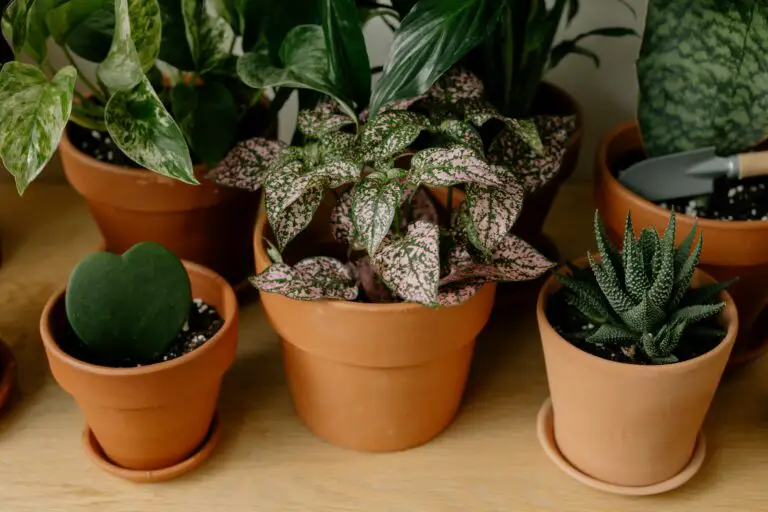
The Best Soil Mix for Haworthia Tessellata
Diving into the earthy world of Haworthia Tessellata, it’s essential to discuss the bedrock of its well-being: the soil mix. Just as a tailor crafts a suit to fit like a glove, the right soil for this succulent should be custom mixed to support its specific needs. Getting down and dirty, let’s unpack the blend that makes for a happy, thriving Tessellata.
Imagine a gritty mix reminiscent of the natural, rocky landscapes in South Africa where Haworthia calls home. We’re striving for a soil concoction that doesn’t just suffocate roots but embraces them with open spaces—pockets of air that ensure the roots can breathe, and water can freely pass. It’s a delicate balance between moisture retention and quick drainage that this succulent craves. After all, rooted in the correct soil, Haworthia Tessellata isn’t just surviving, it’s living its best plant life.
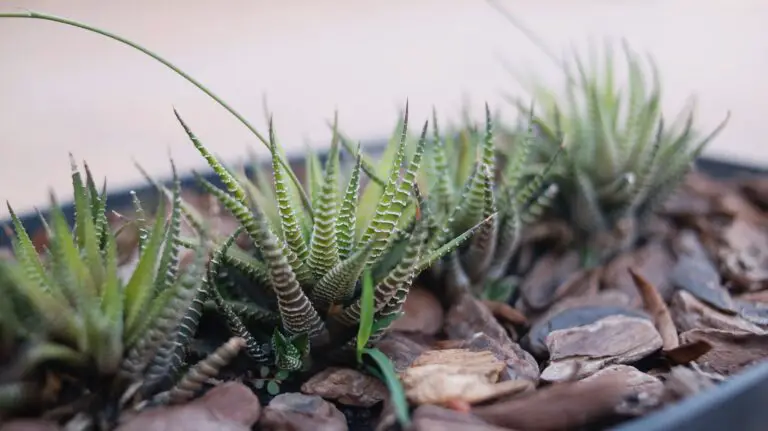
For the DIY enthusiasts, mixing your own Haworthia haven isn’t alchemy. Factor in roughly two-thirds of a mineral component like pumice, perlite, or coarse sand. This isn’t just for show; these gritty agents break up the soil structure, defying any clumping and keeping things free-flowing. The remaining third should be rich, organic matter—consider this the succulent’s smorgasbord, offering up nutrients aplenty.
Green thumbs and beginners alike, take note. Your Haworthia isn’t fond of wet feet. Ensuring proper drainage is like taking out insurance against root rot. It’s down-to-earth plant parenting. Picture your Tessellata perched in its pot, basking in the satisfaction of flawless hydration—neither parched with thirst nor drowning in excess. It’s this soil symphony that cultivates the lush, fleshy leaves characteristic of a flourishing Haworthia Tessellata.
Propagating Haworthia Tessellata Succulents
Welcome to the world of propagation, where you can multiply the enchanting Haworthia Tessellata with ease and grace! Imagine having a miniature garden teeming with these geometric leaf-patterned succulents. With the right guidance, you can turn one plant into a collection of jewel-like treasures. Let’s dive into the mesmerizing process of propagating your very own Haworthia Tessellata.
Getting Started: Choosing Materials
Before you begin, make sure you have the necessary tools: a clean, sharp knife or scissors, a few small pots, and well-draining succulent soil. Sterilize your cutting tools with rubbing alcohol to prevent any disease transfer, ensuring a healthy start for your new plants.
Step 1: Separating Offsets
Offsets, also known as “pups,” are the little clones that sprout at the base of the parent plant. Carefully remove these offsets by cutting as close to the mother plant as possible. Aim to take a bit of the root attached to the offset to help it establish more quickly in its new home.
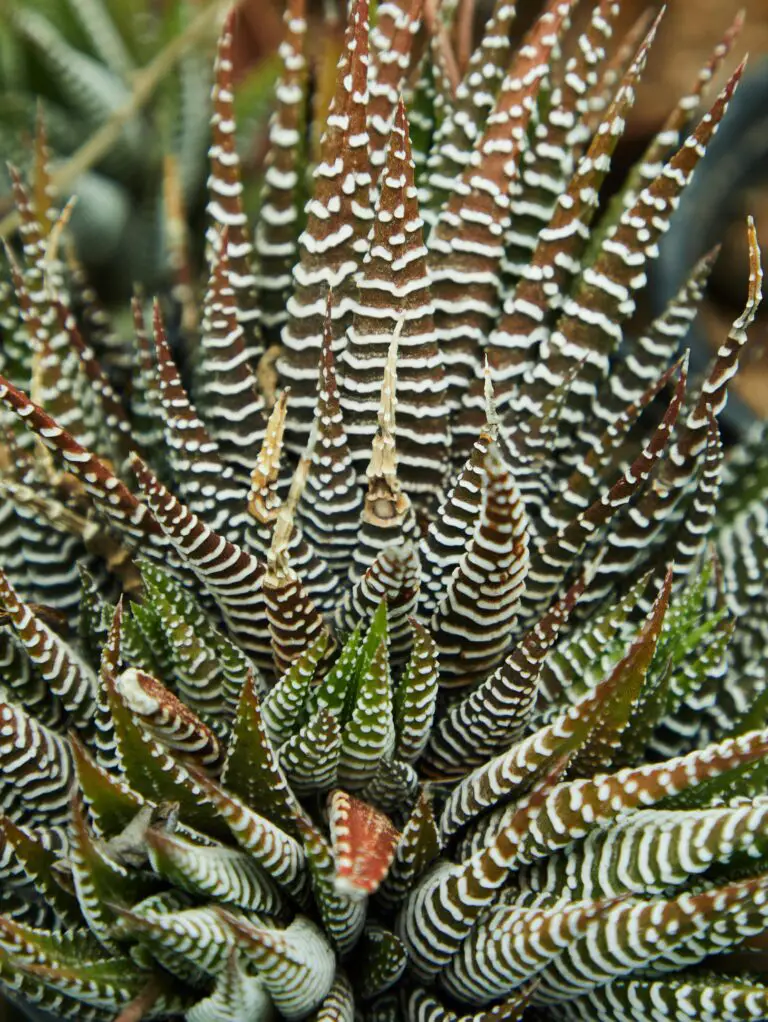
Real-Life Example: Mary’s Mini Garden
Take Mary, a succulent enthusiast, as an example. After carefully separating the offsets, she planted them in individual pots and watched as they grew into robust plants over the months. Her friends were amazed at how her dining table centerpiece transformed into a small succulent display.
Step 2: Rooting the Offsets
Once you have your offsets, let them callous over for a day or two. Then, place them on top of the soil in their new pots, gently pressing them in place. Water sparingly until you notice new growth, signaling that they’ve begun to root. It’s a game of patience and gentleness; be mindful not to overwater and rot these dainty cuttings.
Step 3: Leaf Propagation
If you’re feeling adventurous, you can also propagate Haworthia Tessellata from leaves. Gently twist a healthy leaf from the stem; it should detach with a clean snap. Let it callous over, similarly to the offsets, and then lay it on the soil surface. With time and minimal water, you’ll see tiny replicas of your beloved succulent emerge.
Remember that each tiny life is a slow yet rewarding project. It’s a chance to connect with nature on a personal level, nurturing these babies into full-fledged plants. So, gather your Haworthia pups, channel your inner green thumb, and start the propagation journey toward a lush, tessellated utopia.
Common Challenges in Growing Haworthia Tessellata
Growing Haworthia tessellata may seem like a breeze, but even these hardy succulents can succumb to a few sneaky setbacks. From tiny pests lurking in the crevices to mysterious maladies, each issue demands a keen eye and a proactive approach. Let’s dive into the common challenges and turn those potential hiccups into a seamless growing journey for your succulent gem.
Battling the Bug Brigade
Pests are the uninvited guests we all dread. Imagine you’re admiring your Haworthia tessellata when you spot a mealybug masquerade under the leaves. Aphids, spider mites, and scale insects can join the party too, sapping the life from your beloved plant. It’s like planning a serene garden picnic, only to have ants raid your basket! The solution? Regular inspections and organic pesticides can show these critters the door.

Diagnosing Mysterious Maladies
Diseases can be as stealthy as a cat burglar, striking your Haworthia tessellata when you least expect it. Root rot, for instance, is the silent assassin capable of collapsing a succulent empire from beneath. Waterlogging is often the accomplice, akin to leaving your windows open during a thunderstorm. Fortunately, with well-draining soil and a watchful watering regimen, you can safeguard your succulent from a watery demise.
Correcting Common Care Mistakes
Even the best of us can make mistakes in plant care, often with the best intentions at heart. Have you ever overwatered your plants, hoping to offer them a spa day, only to leave their roots gasping for air? Or maybe you’ve bombarded them with a Vegas-style light show of too much sun. These well-meant missteps can distress your Haworthia tessellata, making it as uncomfortable as wearing wool in the summer. The golden rule is simple: moderation in all things, especially sunlight and hydration.
Being aware of these challenges is like having a roadmap in a foreign city; it helps you navigate the twists and turns of Haworthia tessellata care with confidence. With a vigilant eye and a responsive touch, you’ll keep your succulent looking as timeless as a diamond in the rough.
Designing With Haworthia Tessellata: Aesthetic and Practical Uses
Imagine a touch of nature that not only revives your space with a pop of green but also thrives with minimal care. Enter Haworthia Tessellata, the succulent gem that’s perfect for the modern home. With its geometric shapes and lush, textured leaves, this hardy plant offers an unmatched aesthetic appeal. Here’s how to weave this delightful greenery into your daily living environment, adding both style and a breath of fresh air.
First and foremost, Haworthia Tessellata makes for a fantastic tabletop centerpiece. Whether it’s your living room coffee table or your office desk, placing a chic pot of this succulent can change the entire vibe of the room. It’s not just about looks; studies suggest that having plants in your workspace can enhance productivity and creativity. So, while it elevates your decor, it could be quietly boosting your brain power too!
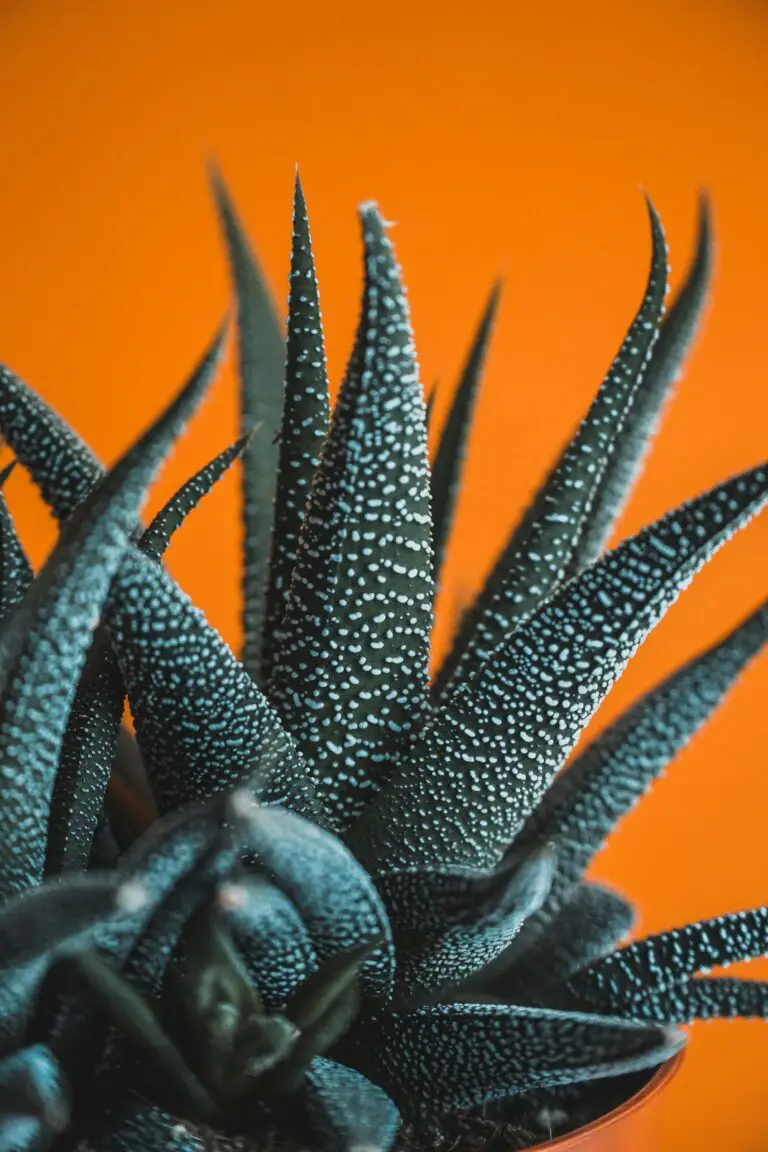
If you’re someone who loves to host, consider using Haworthia Tessellata as part of your table settings or as a creative garnish for your culinary presentations. Picture a sleek, minimalist plate accented with a small Haworthia that complements your cuisine’s color palette. It’s these thoughtful details that make a dining experience memorable and visually stunning.
Let’s not overlook the therapeutic qualities of Haworthia Tessellata. Being a succulent, it is adept at purifying the air and adding moisture to your indoor environment, which can be particularly beneficial during the dry, colder months when heaters are running. This isn’t just about aesthetics; it’s about crafting a healthier habitat within your home.
For the crafty and DIY enthusiasts, Haworthia Tessellata can be the star of your next project. Create your own terrariums by pairing it with complementary succulents and stones, customizing a miniature garden that resonates with your personal style. It’s a fun, hands-on way to engage with nature, producing a one-of-a-kind accent piece in the process.
Finally, consider the low maintenance nature of the Haworthia Tessellata. It doesn’t ask for much—just some light and a sip of water now and then. It’s perfect for busy individuals or those who may not have a green thumb. This means you can enjoy the lush look of greenery without the worry of extensive caretaking.
Whether you’re adorning your home for aesthetic pleasure or for the practical benefits of cleaner air and enhanced focus, Haworthia Tessellata seamlessly integrates into your life. So embrace this succulent gem and watch as it transforms your spaces into healthier, more inviting environments.
Haworthia Tessellata and Its Cousins: A Comparative Study
When you enter the diverse world of succulents, Haworthia tessellata stands out with its unique, mosaic-like patterns adorning plump, juicy leaves. Known for its resilient and laid-back nature, it’s a favorite among both novice and seasoned plant lovers. But how does it fare when compared to its illustrious relatives? Let’s delve into the world of Haworthias and discover what makes Tessellata the jewel in the succulent crown.
Imagine a family reunion where everyone has their signature look – that’s the Haworthia genus for you. Each species flaunts distinct features, yet they all share genes that make them masters of survival in harsh landscapes. It begs the question: amidst such diversity, what special traits does Haworthia tessellata possess? For starters, its tessellated leaf patterns are not just aesthetically pleasing but serve as a camouflage, blending into the rocky African terrain from which it hails.
Contrast this with the smooth, spear-like leaves of Haworthia attenuata or the striking rosettes of Haworthia cooperi, each bringing their flair to the Haworthia lineup. While cousins like Haworthia fasciata boast white bands on deep green leaves resembling zebra stripes, Tessellata’s intricate patterns hold their captivating charm, enchanting anyone who takes a closer peek.
What’s more – Haworthia tessellata doesn’t just look good, it plays hard to match. This tenacious plant is drought-resistant, thriving in arid conditions where others might wither. Its plump leaves store water, allowing it to withstand periods of neglect, making it a perfect companion for the forgetful gardener. In the world of Haworthias, each member has a role, but Tessellata might just be the most low-maintenance of the clan.
As if its physical attributes weren’t impressive enough, Haworthia tessellata’s blossoming habits are the talk of the town. While some family members shy away from the spotlight, Tessellata proudly shows off its delicate white-to-pale-pink flowers that emerge on slender stalks, proving yet again why it’s a standout in the succulent community.
To truly appreciate Haworthia tessellata and its cousins, let’s take a visual journey into their world. Below is a video that showcases the lovely blossoming of a Haworthia species and the captivating process of harvesting its seeds. While not specifically focused on Tessellata, it highlights the allure and meticulous care of Haworthia plants.
In conclusion, while many succulents might fade into the greenery, Haworthia tessellata stands tall and patterned among its peers. With its resilient nature, distinctive look, and endearing flowers, it’s easy to see why this succulent gem has etched itself into the hearts of plant enthusiasts. Whether displayed alone or nestled among its relatives, Tessellata is a testimony to the unpredictable beauty of evolution and the captivating diversity found within the Haworthia genus.
Frequently Asked Questions
Welcome to the world of Haworthia Tessellata, a succulent treasure that has enticed plant enthusiasts and captivated hearts with its unique, mosaic-like patterns. We know you have questions, and we’re here to dig into the gritty details of caring for these little green jewels. Let’s not just scratch the surface—let’s dive in!
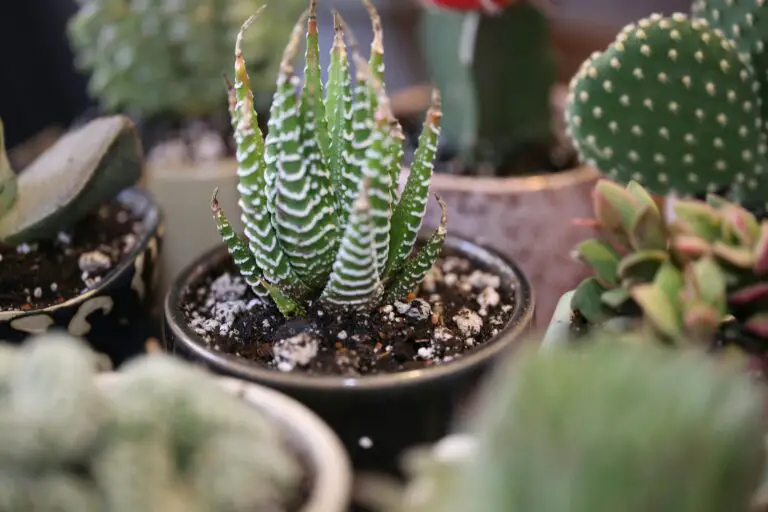
How do I ensure my Haworthia Tessellata thrives?
Imagine this: You’ve just been gifted a Haworthia Tessellata, and you’re eager to see it flourish. Here’s the secret—balance! Your succulent craves bright, indirect sunlight, cozy temperatures (think room temperature), and a drink only when its soil is dry to the touch. Remember, treat it like a desert native, which means avoiding the overeager watering can.
My Haworthia Tessellata looks a bit off, what could be wrong?
Picture a Haworthia Tessellata with leaves that are as plump and glossy as grapes—this is a happy plant. If it starts looking more like a raisin than a grape, it’s signaling SOS! Typically, shriveling is a cry for water, but if your plant’s leaves are turning yellow or translucent, that’s overwatering raising a red flag. Adjust your care routine like a finely tuned instrument, and you’ll have your plant singing again in no time.
Why is it so important to have the right soil for Haworthia Tessellata?
Think of succulent soil as the bedding of a slumbering baby—it needs to be just right. Your Haworthia Tessellata’s roots desire a light, airy mix where water passes through quickly, never lingering long enough to create a soggy situation. It’s all about creating the perfect base camp for growth that’s well-draining and rich in nutrients.
Can Haworthia Tessellata handle full sun?
Imagine your succulent as a sunbather who prefers the shade of an umbrella rather than direct sunlight. Haworthia Tessellata enjoys the warmth, but too much direct sun can cause a sunburn (yes, plants get that too!). A spot that is bathed in indirect sunlight will have your plant basking in joy without the risk of a sunburned glow.
